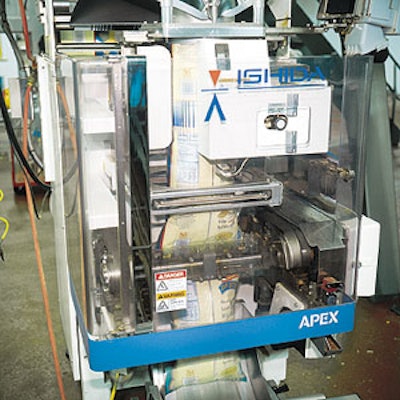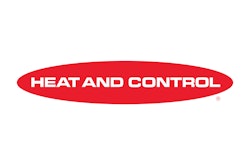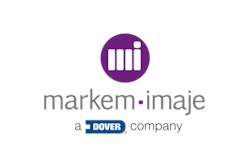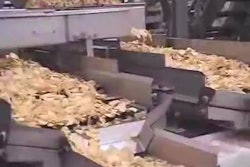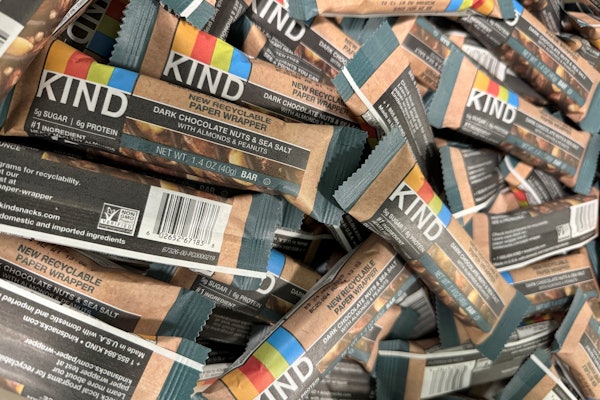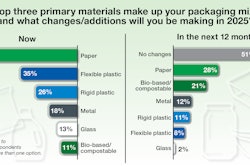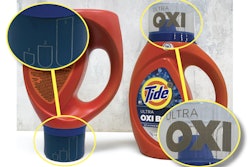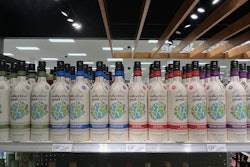The enthusiasm and camaraderie among Golden Flake employees was evident during Packaging World’s late-March visit to the Birmingham, AL-based snack maker. For example, one of the company’s workers, who packs bags into shipping cases, has worked there for 50 years, according to David Jones, vice president of operations. Management values employee loyalty and experience. What it can’t afford is aging, “experienced” equipment.
Before last October, Golden Flake used 21 vertical form/fill/seal machines to bag potato chips, which represent the bulk of the snack producer’s business. Many of those machines were eligible for 20- to 30-year service pins. “They were reliable, and they did a good job,” says Jones. “But we needed more speed and production. We also needed machinery that could produce a greater variety of bag sizes.”
Replacing them was a challenge in that it wasn’t until recently that Jones felt the new equipment was worth the investment. “From the eighties until a couple of years ago, there really hadn’t been any bagmaking equipment for snacks that would have enticed us to make a capital expenditure,” says Jones. “There was no overwhelming hook where we’d be able to save a lot of money to justify buying [such machinery].”
Jones says that Golden Flake considered three different high-speed machines to replace its aging units. “We visited several snack food manufacturing plants that had these machines,” he relates, saying “there’s an unspoken rule in the snack business that if you let people into your plant, you’re allowed to visit their plants.”
Golden Flake sought a vendor that could provide what Jones calls “a total solution” to its needs for high-speed production, computerized weighers, and important conveying equipment between processing and packaging. That combination of criteria left one supplier standing: Heat and Control (Hayward, CA), which provided the turnkey system.
The benefits
In October ’01, the company invested more than $2 million for eight Heat and Control Ishida Apex® bagmakers; Ishida Millennium multihead weighers; accumulating conveyors; and FastBack distribution, cross-feed, and chip-sizing conveyors. The eight machines operate in the potato chip packaging area. A ninth Apex/Millenium combo is used in a separate room for tortilla chip packaging. It took the place of two older machines.
“We took out the 21 older machines,” says Jones. “We discarded some of them, moved some to other areas of the plant where they upgraded older machines, and we also made use of some of their parts.”
The new machinery delivers significant advantages for Golden Flake. Among them:
• Double the speeds. Previous vf/f/s equipment functioned at 60 bags/min with the company’s smallest size, 1-oz chip bags; 13 bags/min with 20-oz packs, its largest size.
• Labor savings. Fewer machines operating more efficiently eliminated the need for 100 temporary workers.
• Flexibility. Each of the new machines can accommodate any of the company’s pack sizes. The former equipment was limited to certain size ranges.
• Reduced waste. The FastBack conveyors reduce chip breakage. Also, packaging film waste was trimmed from 15% to just under 5%, and product giveaway was reduced by at least 10%.
• Payback of less than three years.
Conveyor systems
In the potato chip packaging area, Golden Flake employs two fryers, each of which outputs 3겨 lb/hr.
Each fryer’s output is discharged and conveyed along one of two FastBack infeed conveyors to Minuteman belt accumulators that temporarily hold chips to help prevent downstream chip damage or backups at the scale systems. Flighted belt conveyors carry chips on an incline up to the mezzanine level where FastBack conveyors distribute the chips onto the scale systems.
Throughout the trip from the fryers to the scales, the FastBack conveyors use a horizontal motion that not only vibrates, but produces a “slow-forward” and “fast-backward” gliding motion that reduces product damage compared to standard vibratory conveyors.
Scale systems
At the mezzanine level, chips are again conveyed on FastBack infeed conveyors. An auger distributes expensive chip seasoning onto a cone mounted just above the infeed conveyor.
Seasoned chips gently tumble onto a “dispersion table” into one of 14 scales around computer scale systems. A load cell in each of the 14 scales measures the weight of the chips in each bucket. The computerized bucket system selects buckets that most closely meet the target weight for each bag. Those buckets release chips through a second set of buckets positioned immediately below each of the weigh buckets. Chips fall through a filling tube into the bottom-sealed bag material formed around the tube on the Ishida Apex bagmaker.
About four times a year, Golden Flake runs a special promotion where it adds coupons to its 5½-oz varieties. The preprinted, folded coupons are held in a magazine of a coupon-inserting machine from Gallimore Industries (Lake Villa, IL). The machine uses air motors that propel a coupon out of a small conveyor into the chips in the scale as they fall into the filling tube.
Golden Flake uses two film vendors. Bryce (Memphis, TN) supplies a 2.6-mil structure of oriented polypropylene/12# polyethylene adhesive/metallized coextruded PP, flexo-printed in eight colors. Master Packaging (Tampa, FL) provides a 1.5-mil structure of 80-ga coextruded OPP/70-ga metallized OPP. The outer 80-ga OPP is reverse-printed flexographically in eight colors. This film is used primarily for smaller bag sizes, according to Jones.
Film unwinds from the back of the machine, with servo motors used to help maintain constant web tension as the film is turned 90° across a turning bar to help reduce film drag. Each of the eight machines is equipped with a Model 3C thermal-transfer coder from Markem (Keene, NH). It prints a price and expiration date, which is eight weeks from the date of manufacture.
Film is formed around a forming tube, with pull belts advancing the film downward through the Apex machine. A heat sealer creates a lap seal, which Jones says uses less material than a fin seal and allows the machinery to run faster than if a fin seal was made.
A bottom cross-seal is created by steel sealing jaws, the bag is filled, then another cross seal is made, simultaneously forming the bottom for the next fill. During sealing, the Apex units are equipped with a “product shaker” device that helps settle chips down in the bag, away from the seal area. Once the bag is sealed, a knife cuts in the sealed area and the bag is discharged.
The units at Golden Flake produce 1-oz bags at speeds of 120/min, 1.75 oz at 108/min, 3 oz at 90/min, 5.5 oz at 64/min, 12¼ oz at 34/min, and 20 oz at 25/min.
Mechanical ‘chutes’ assist
Bags discharge from the bottom of each of the eight machines through a lane-changing collating device from Cantrell, a division of A.C. Horn (Dallas, TX). The “chute,” as Golden Flake calls it, includes two finger-like devices through which chip bags pass. Used for smaller bags, the chutes divert bags to the left or right side of an inclined belt conveyor.
The chutes serve an important function according to Neal Hunt, Golden Flake’s production manager. “We do this because at the end of each conveyor is a case-packing station manned by two people, one on each side of the conveyor. Each packer picks up a group of bags with both hands and places them into a case. The chute diverts the appropriate number of bags to one side for the first worker, then that same number of bags to the other side for the second packer.”
As each bag discharges from a vf/f/s machine, it is detected by a photoeye that counts the bag. When a predetermined number of bags is reached, depending on bag size, the PC signals the chute to move in the other direction. Unlike some devices that use a single “finger” to divert a package, this two-fingered collator makes sure bags move in the same direction as they discharge onto the inclined conveyor. That makes them easier for workers to grab and stack into the shipping case.
Packers erect the tab-lock cases by hand, then pack bags of chips into the case. Case tops are closed similarly to their bottoms, by pushing flaps into slots or tabs. Hunt says Golden Flake uses returnable cases. “We average around five return trips per case,” he notes.
Each of the eight packing stations is equipped with a new labeler from Packaging Accessories (Southlake, TX). The electric label dispenser uses pressure-sensitive rollstock printed with a product bar code, expiration date, and manufacturing date. When the packer pulls off the leading label, the next label automatically advances. The operator places the labeled case onto an overhead conveyor where it’s conveyed to the shipping area in a nearby building. Boxes are automatically palletized and stretch-wrapped.
In the warehouse, pallets are positioned onto a “gravity flow rack so that the freshest product is in back, with the oldest product rotated forward,” explains Jones. Pallets of product are shipped by truck to 12 states for sale in the southeastern United States and the Caribbean. A limited number of distributors also sell the chips in other areas of the United States.
Jones says that sales venues include supermarkets, mom-and-pop stores, even beauty shops. Bags sell for 25¢ to $2.89, depending on size. “We’ve found that the small bags sold in beauty shops represent a pretty decent business for us,” he points out.
Justifying the investment
Since adding the Heat and Control equipment, “we’ve seen a 15- to 20-percent increase in machine efficiency with fewer people,” says Jones. Hunt adds, “With our old bagmakers, our efficiencies ranged from the upper-fifties to the mid-sixties. Now we run from the mid-seventies to the eighties.” Reaching levels in the 90s, Hunt says, “depends on our bag mix. If we can run one item for two or three shifts continuously, the efficiencies can jump to the nineties, but when we’re making five changeovers during a day, naturally our overall efficiencies are going to go down.
“We elected to go with this system because of the added efficiency and flexibility,” Hunt recalls. The company has not been disappointed.
“When we started looking at high-speed bagmaking equipment a few years ago, and as full-time people retired, we replaced them with temporary help,” Jones adds. “No full-timers lost their jobs, but we did reduce our temporary help from about 160 to 60 people.
“The temporary people did things like floor sweeping, sanitation, handling chip boxes, and other varied tasks,” Jones recalls. “They’re no longer needed mainly because we don’t need so many people to maintain the facility. With fewer machines, there’s less area to sweep, fewer boxes to move to all those machines, fewer people needed for sanitation duties, shipping, and so on.”
In terms of output, Golden Flake now has eight machines producing the same volume as the 21 did before. Considering that machine speeds have doubled, it would seem that the new machines could produce the equivalent of 16 of the former machines. But Hunt explains that not all of the 21 older machines were used at once because they only handled certain sizes. Because of that, the eight new machines do the work that the 21 former units did.
The 175ꯠ-sq’ Birmingham facility, divided among two buildings, produces extruded snacks as well as potato chips. The new equipment in the potato chip area operates on two 10-hour daily shifts, five days per week. A third shift is employed for cleanup duties.
Besides speed and labor advantages, Jones points out that the Heat and Control equipment “gives us more flexibility in our efforts to service our sales department. That’s our number one goal. We get our orders 24 hours in advance of shipping, so we keep a fair amount of product in inventory, but we have to be pretty quick on our feet to meet changing sales orders. With this equipment, we can more quickly accommodate those.
“We’ve reduced our film waste to less than five percent,” Jones continues. “The older machines just didn’t function as well, we had problems in pulling the film down, and the sealing wasn’t as good. We’ve also reduced our product giveaway by at least 10 percent compared to the older-generation weighers. There’s better technology on these.”
Jones concludes, “At first we were just looking for high-speed bagmakers and computerized weighers, but Heat and Control gave us the total solution we sought.”
